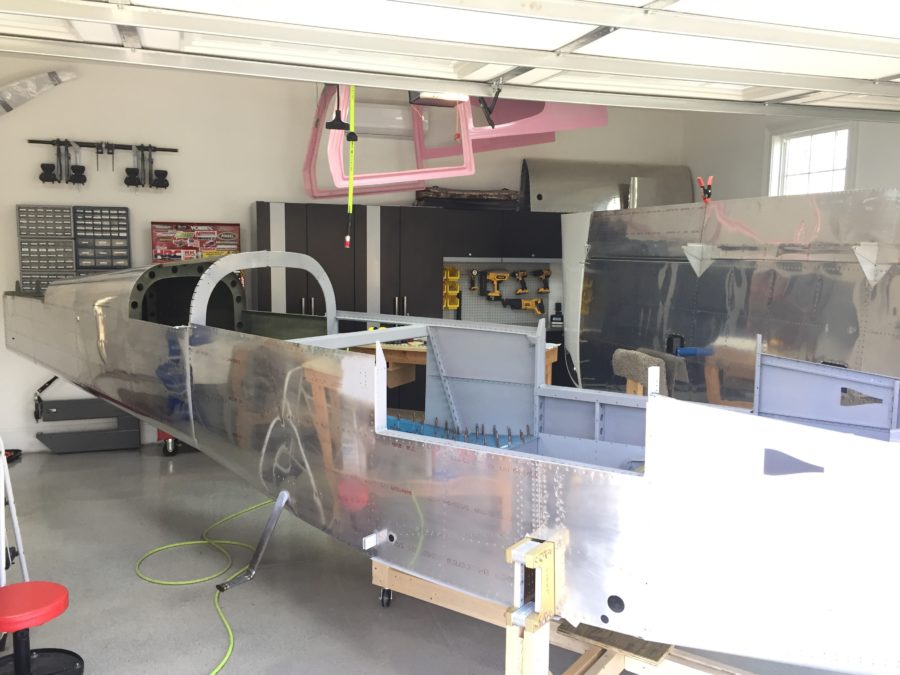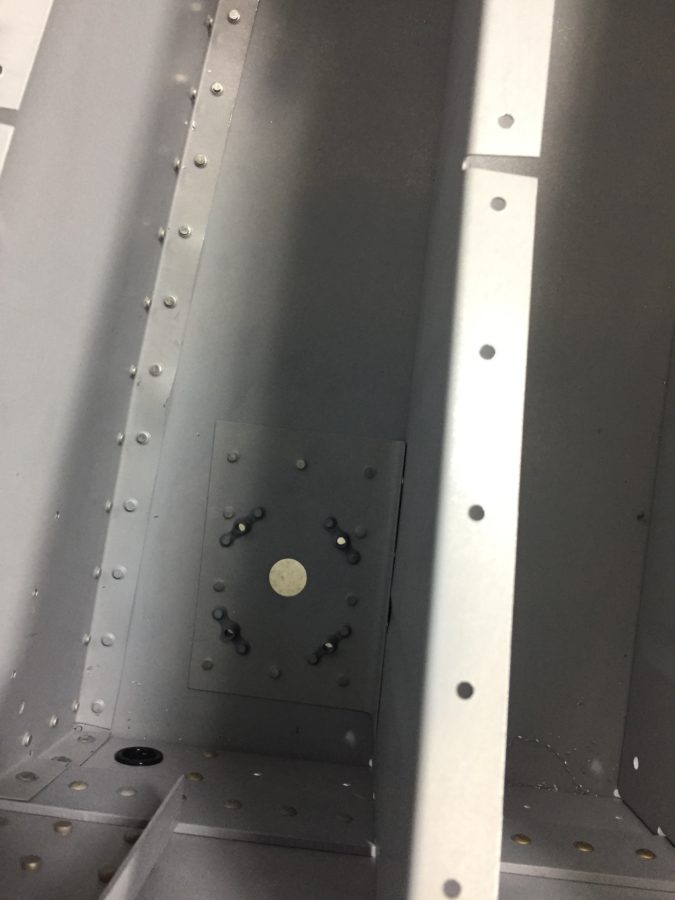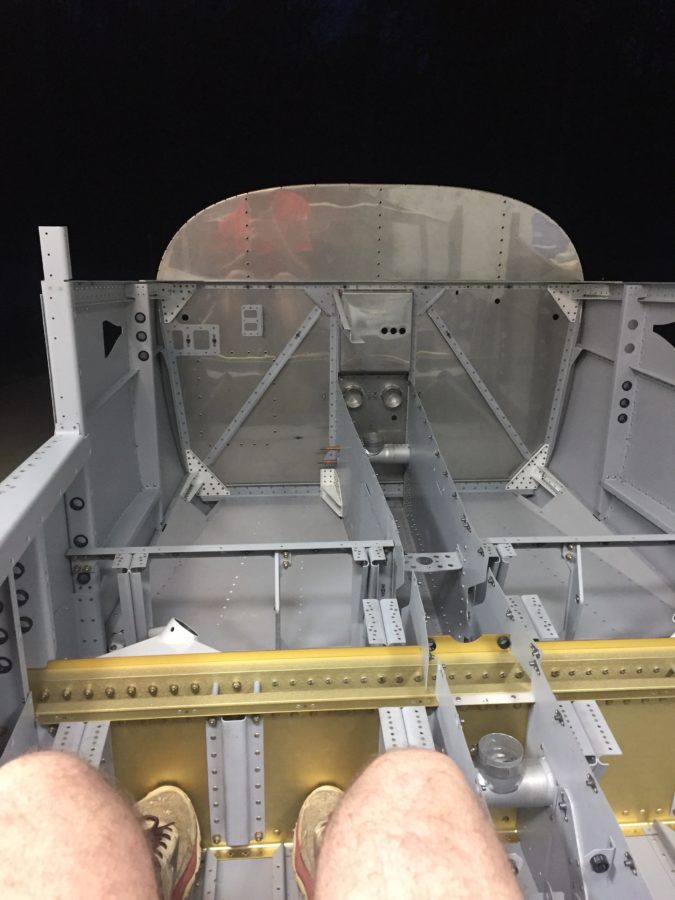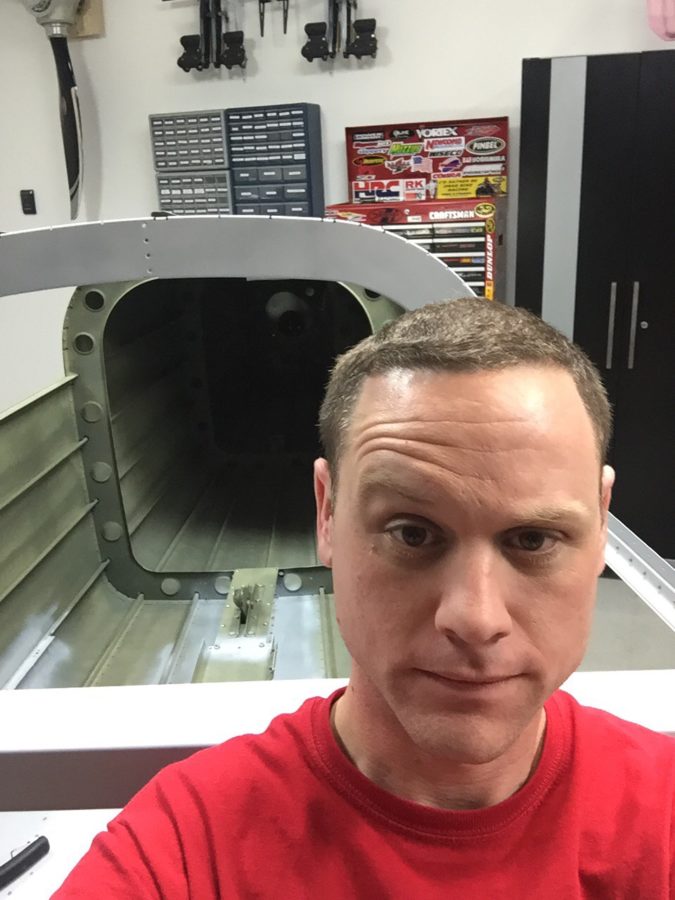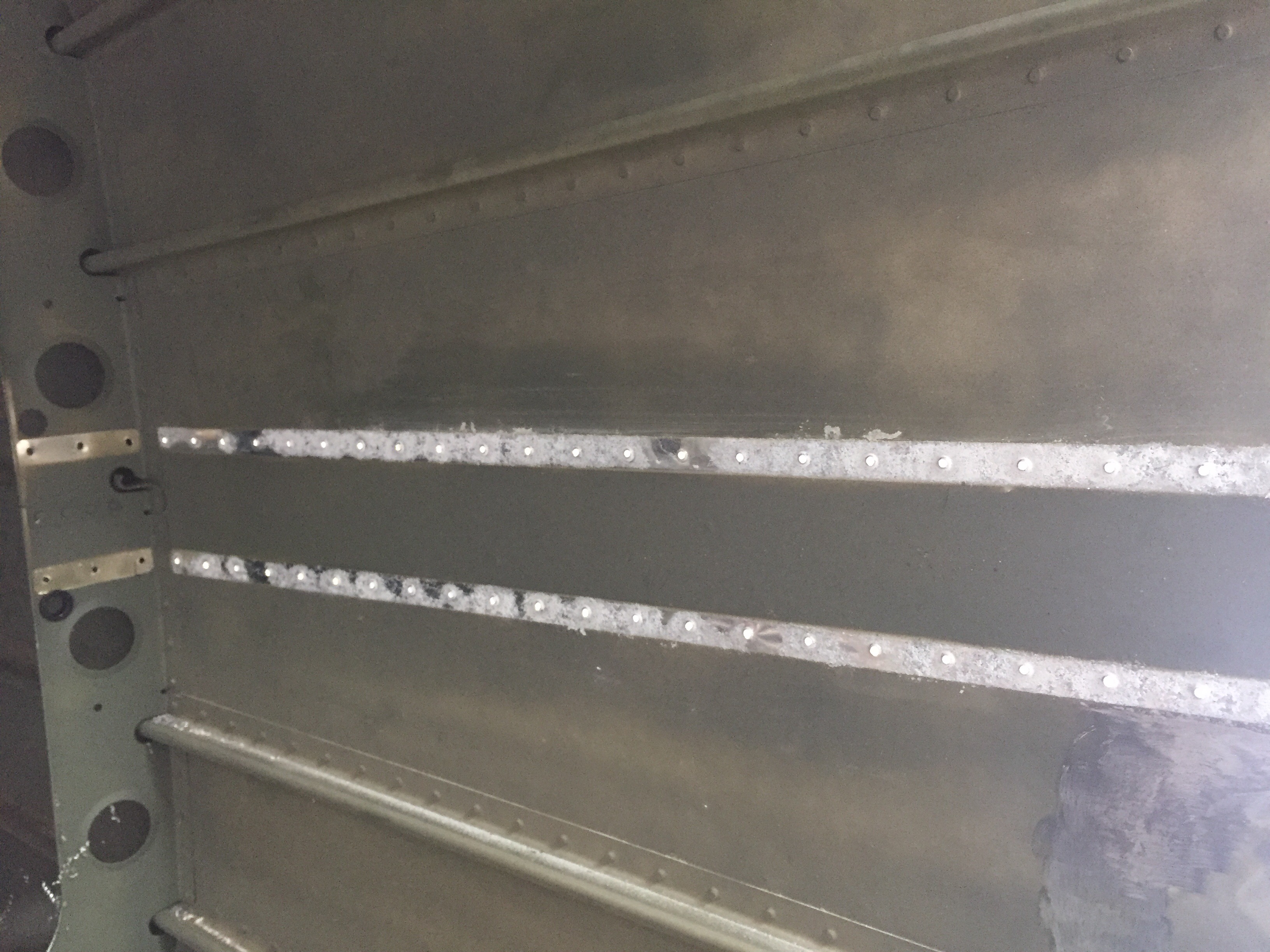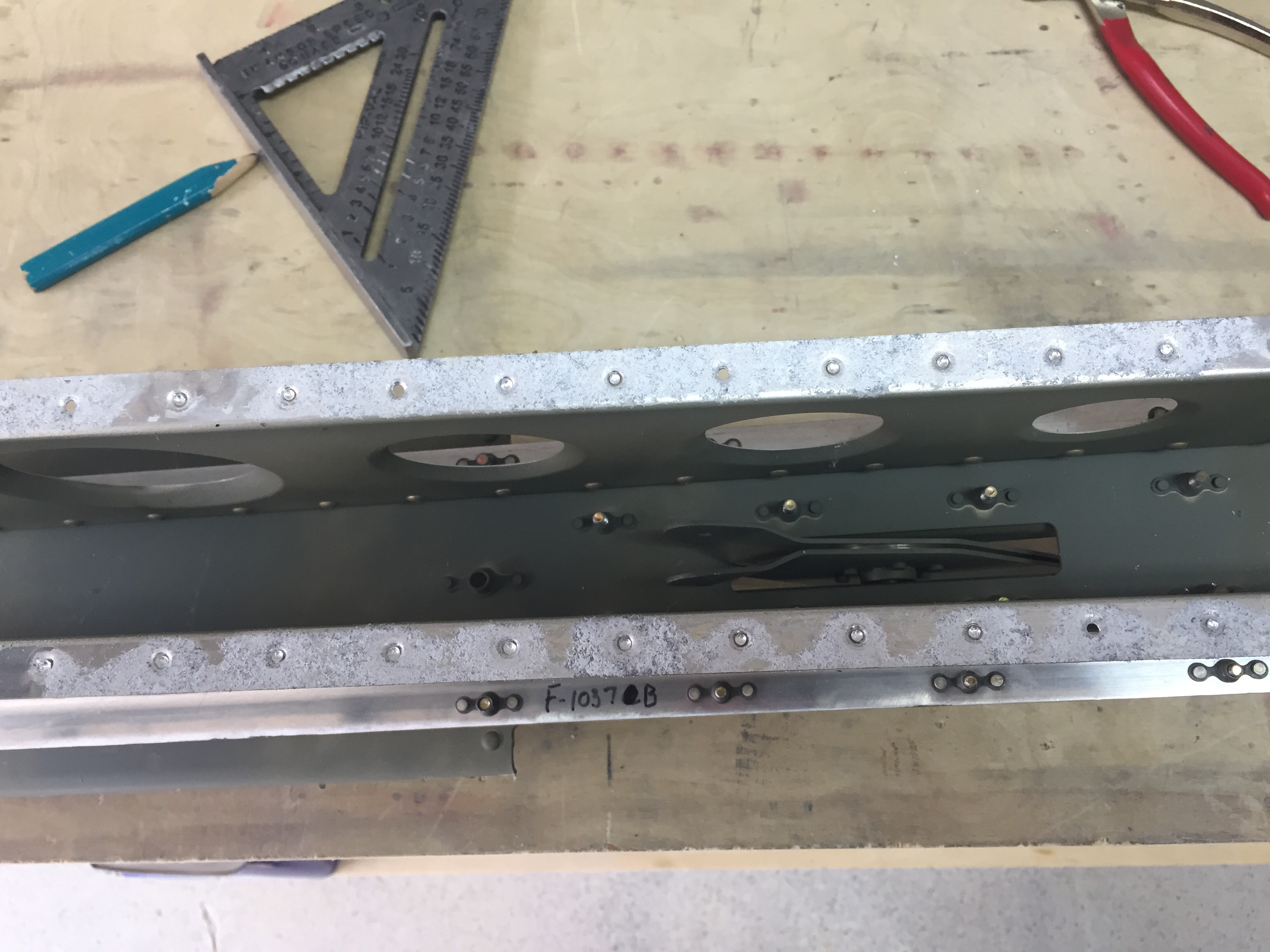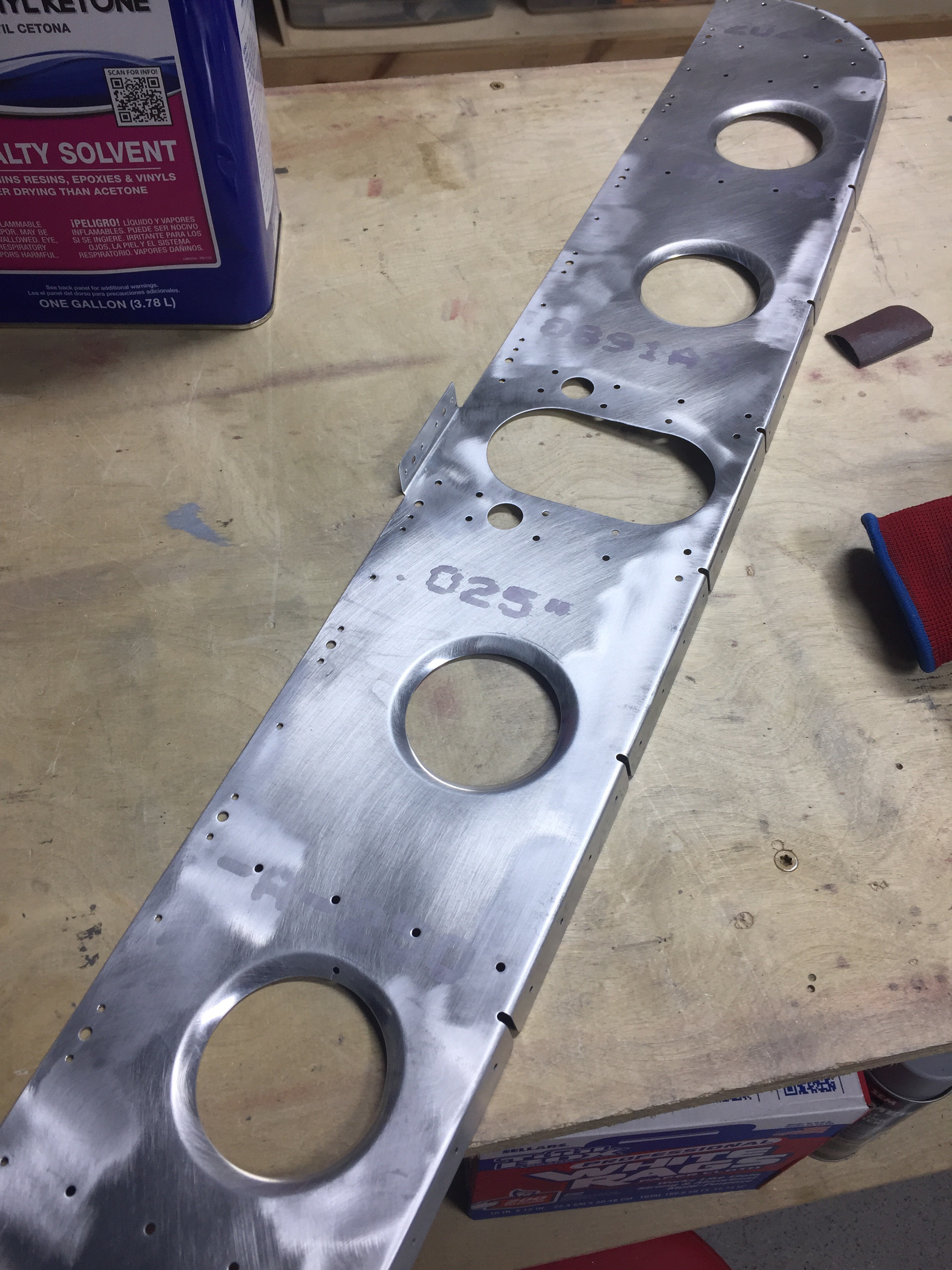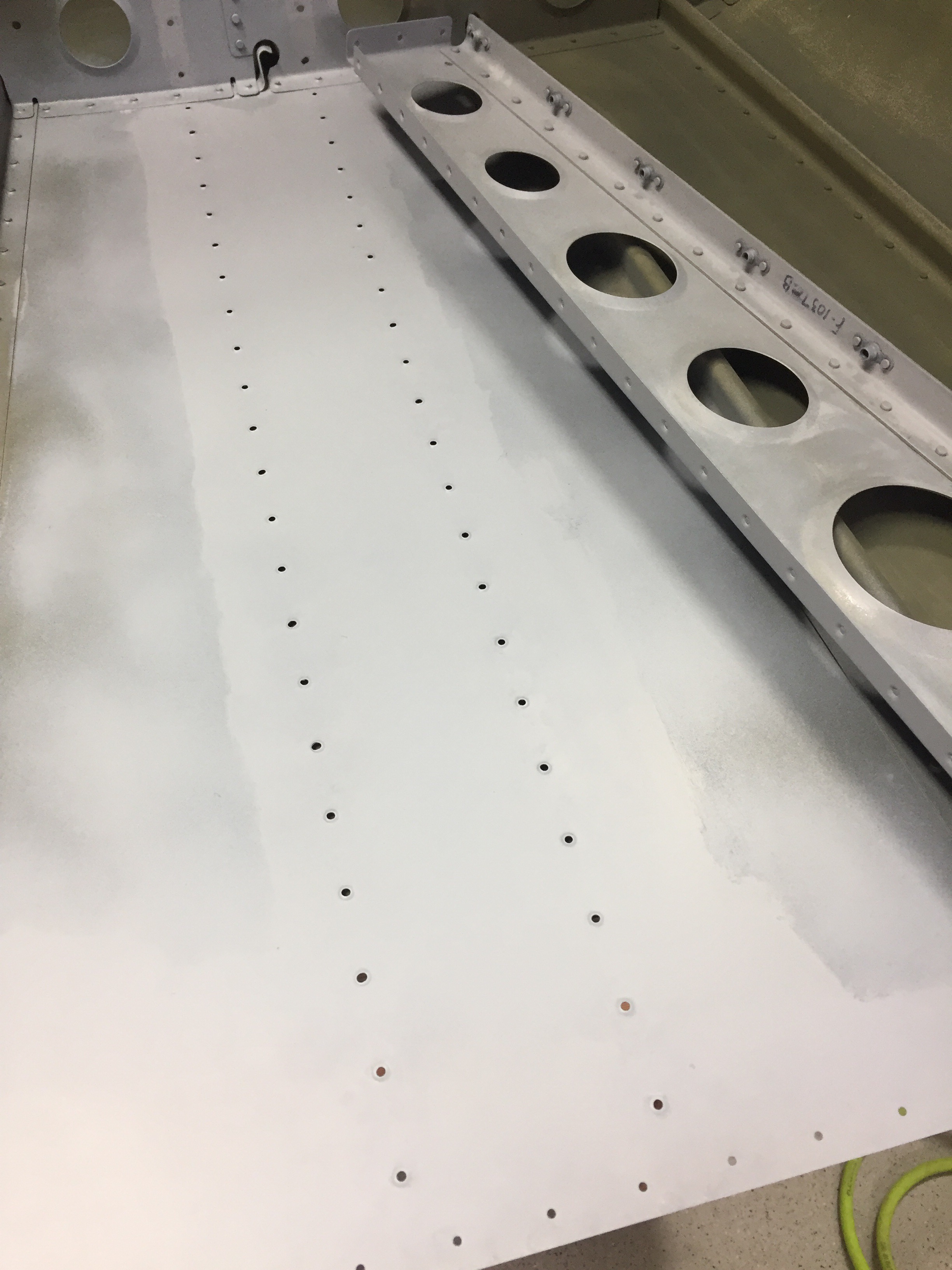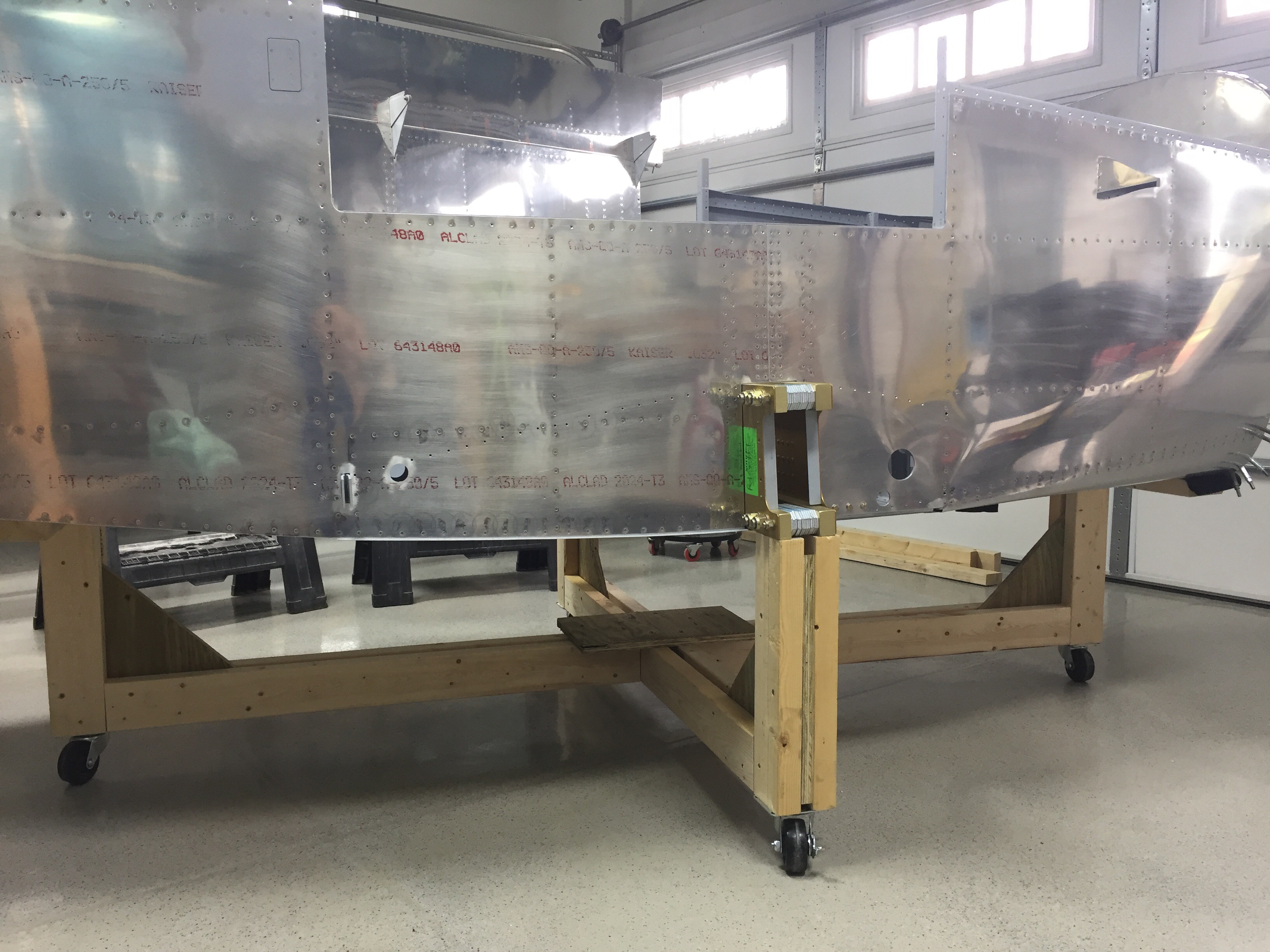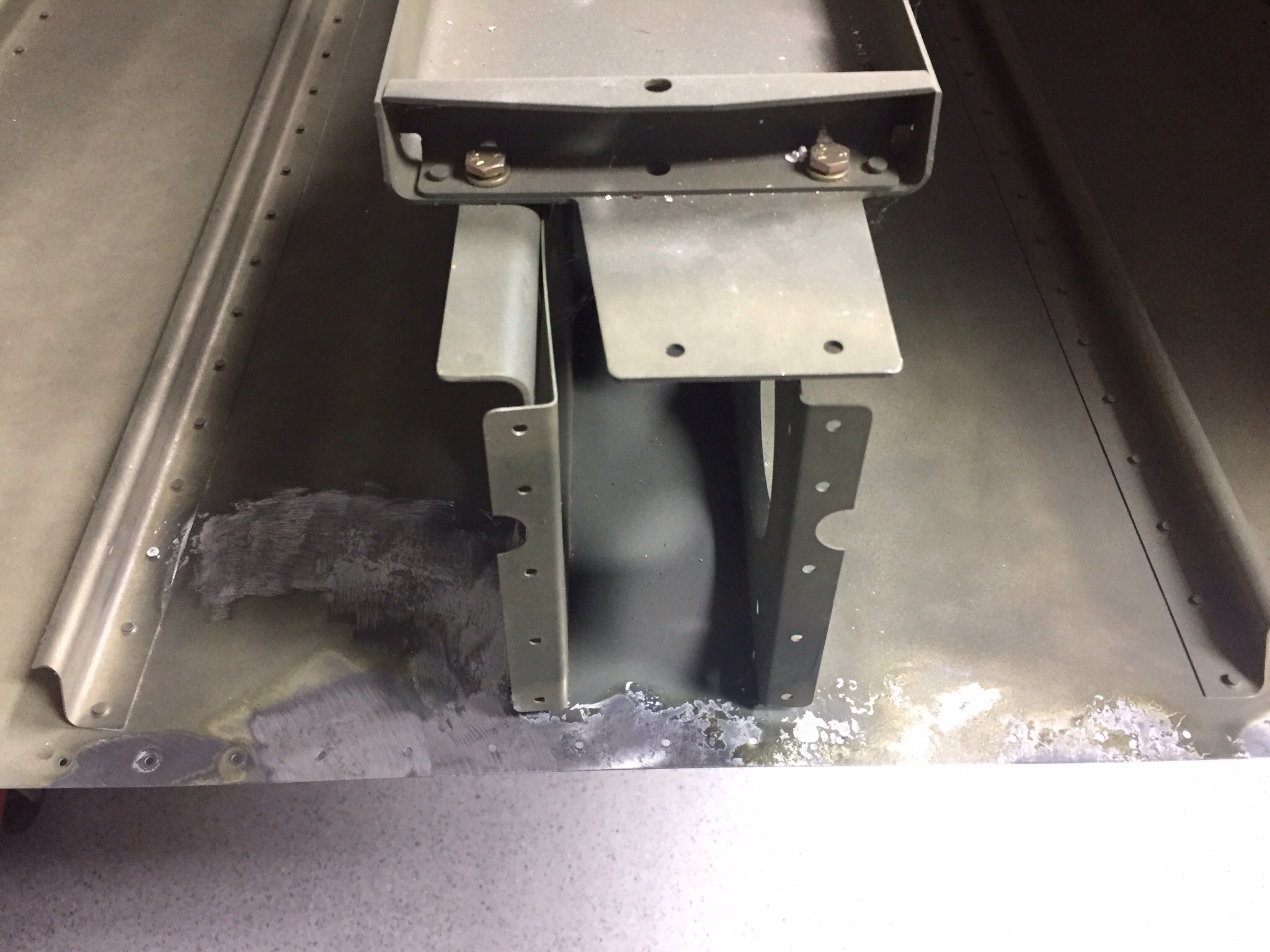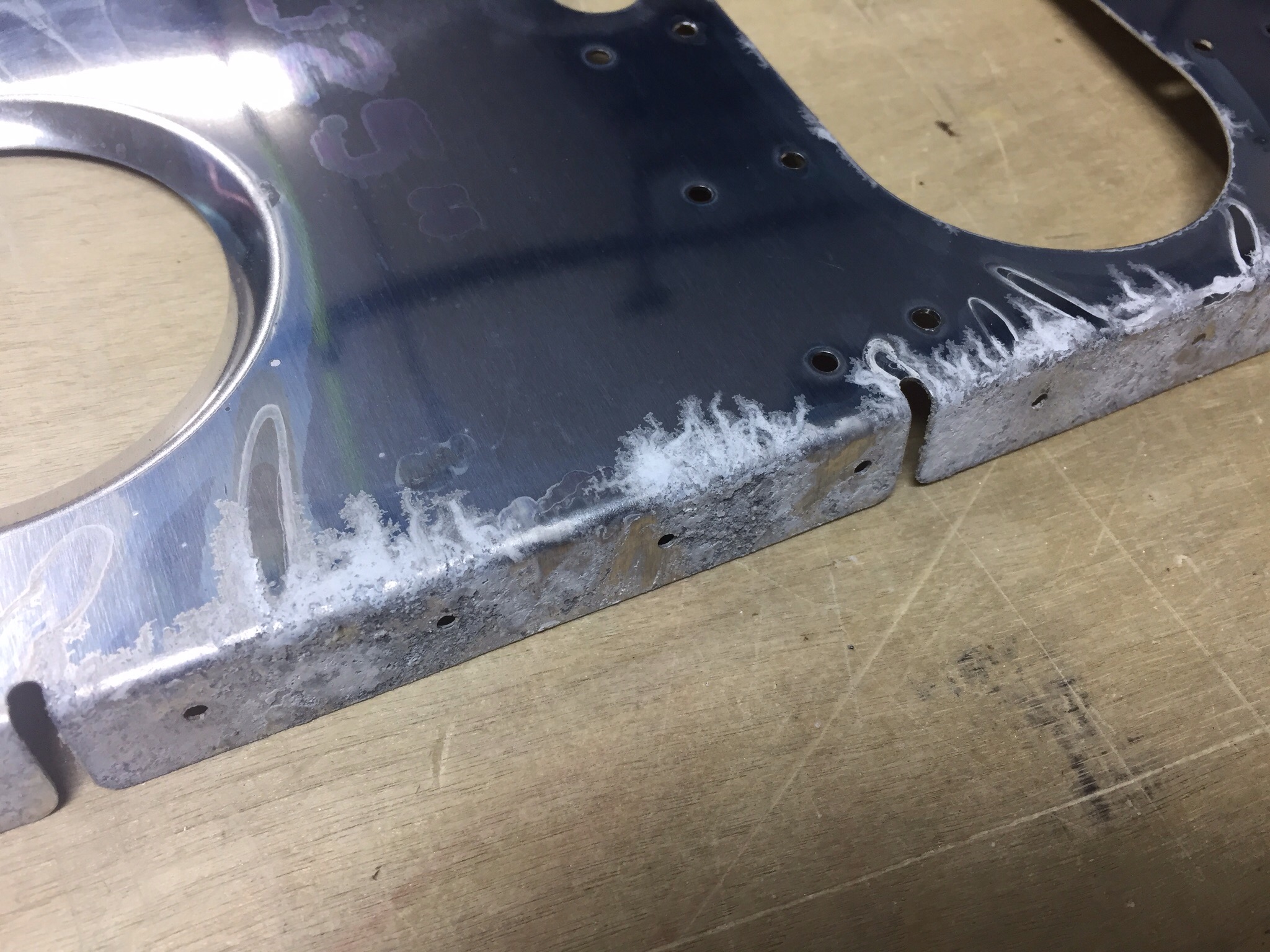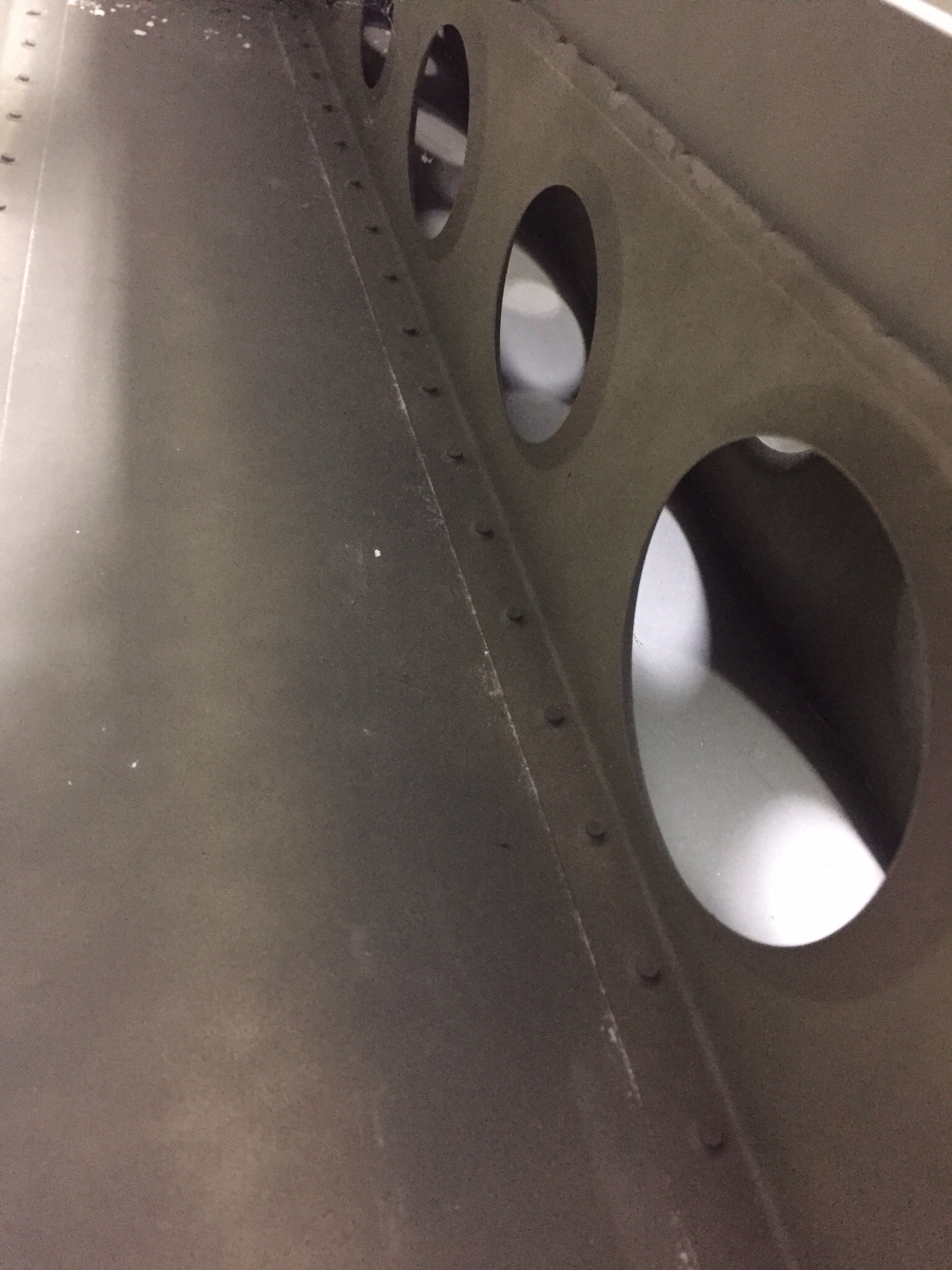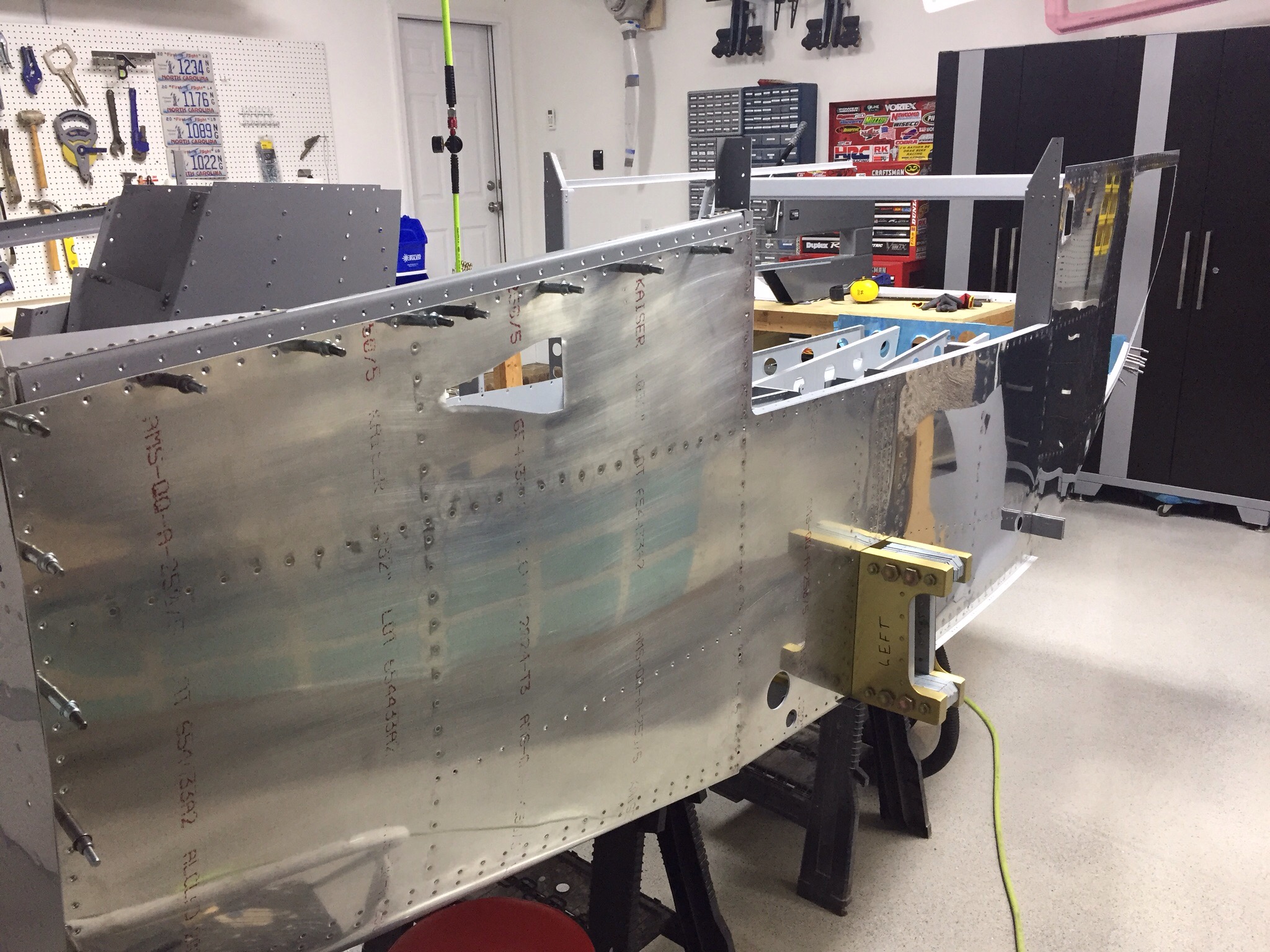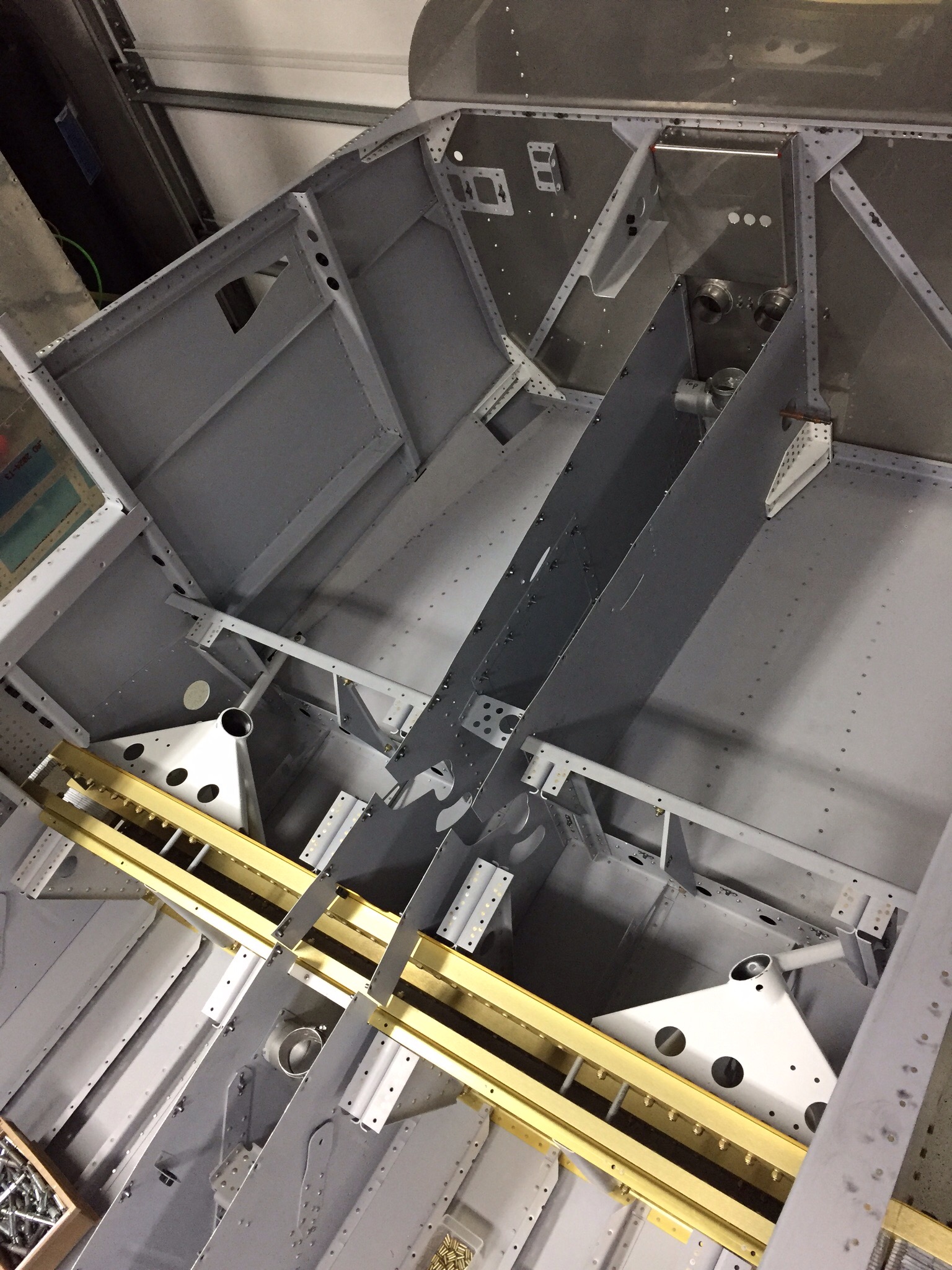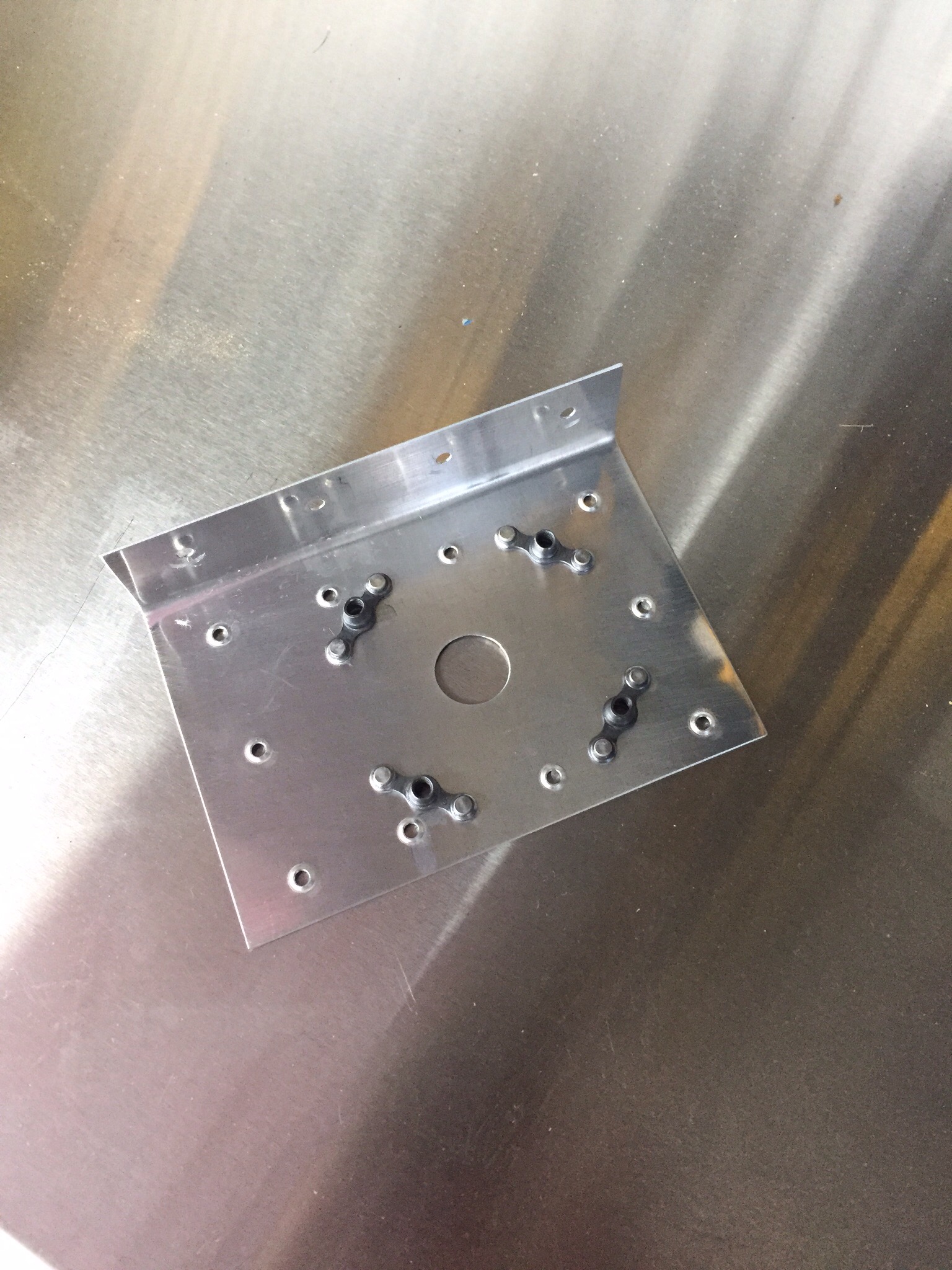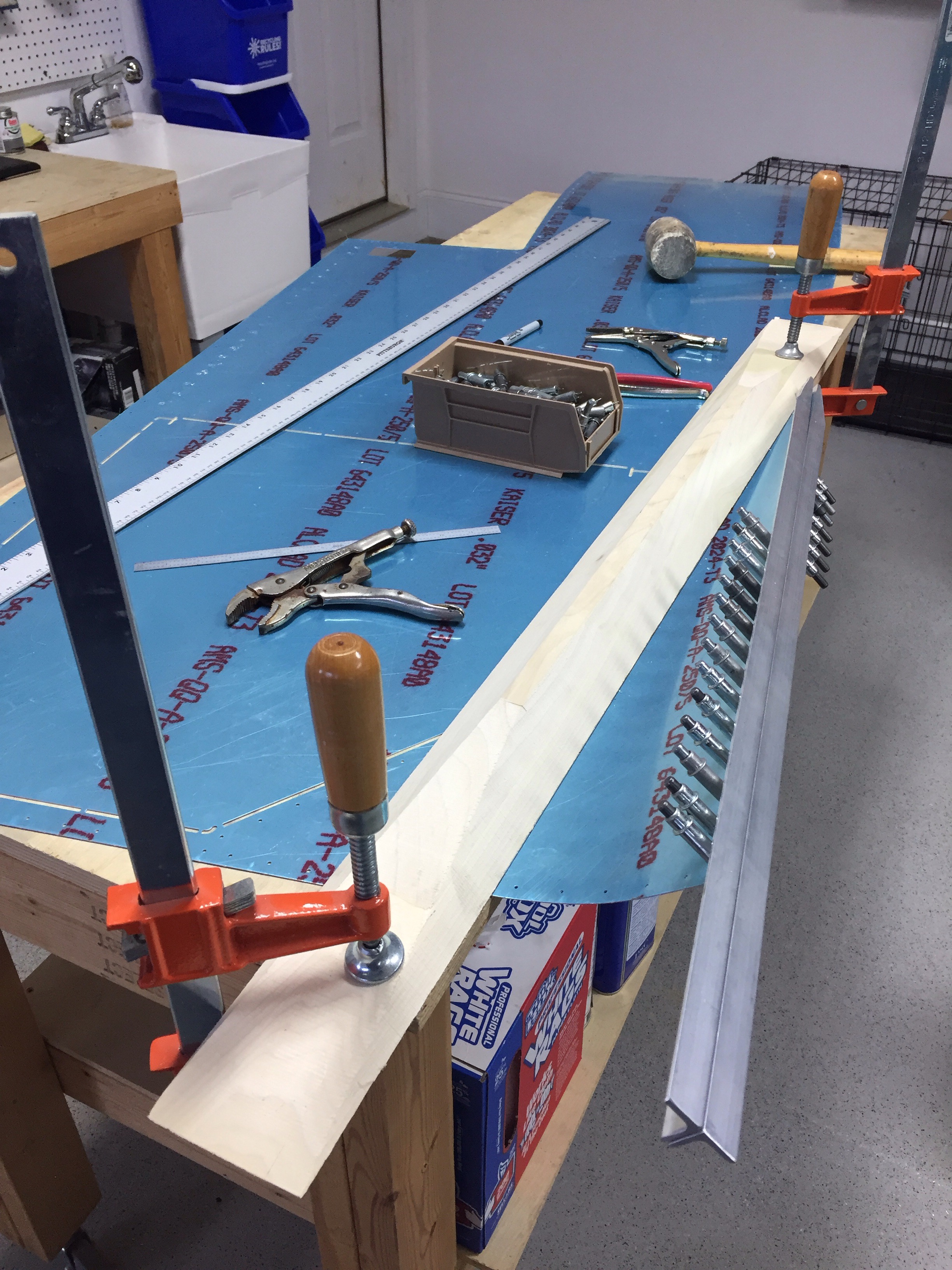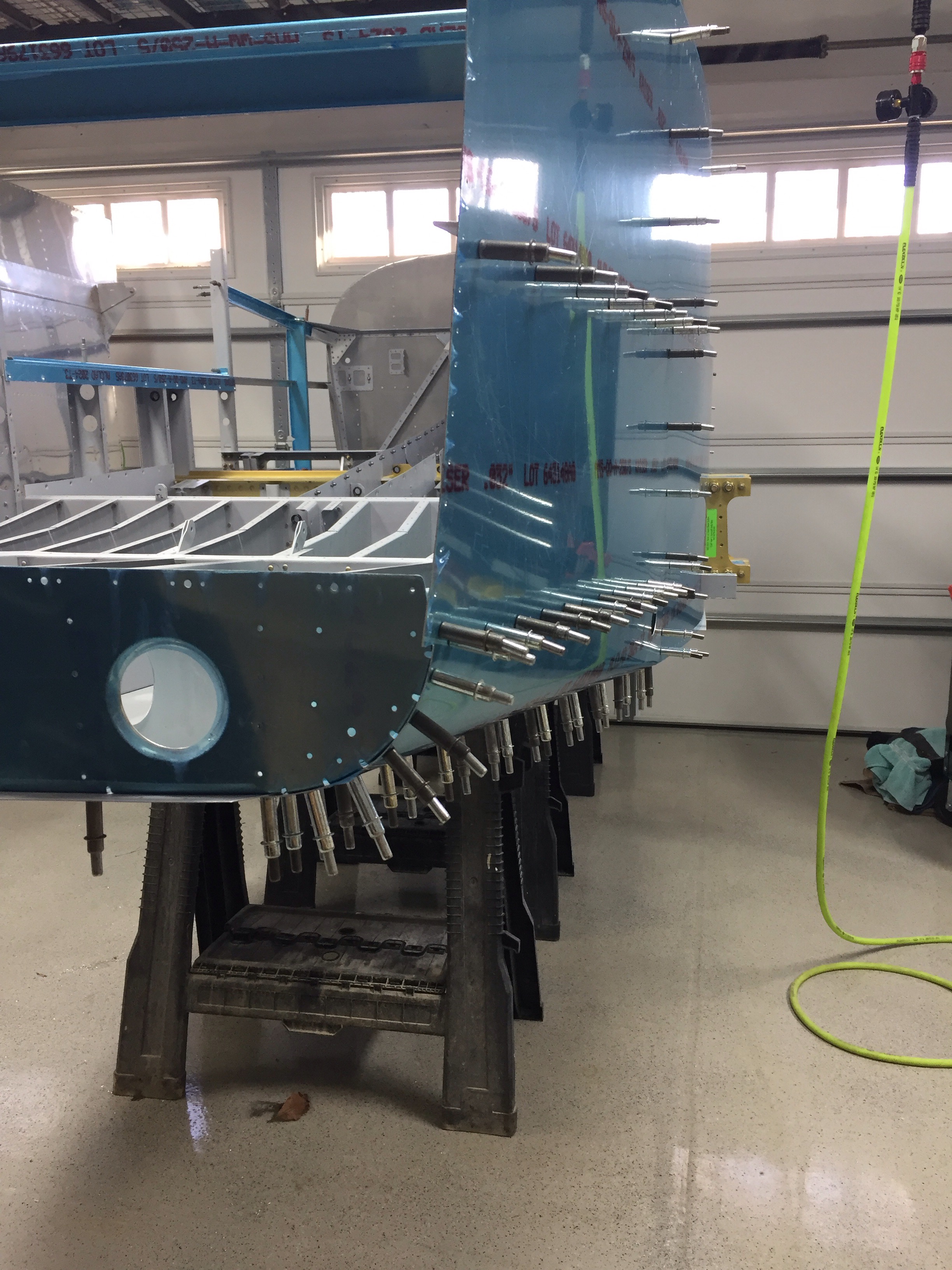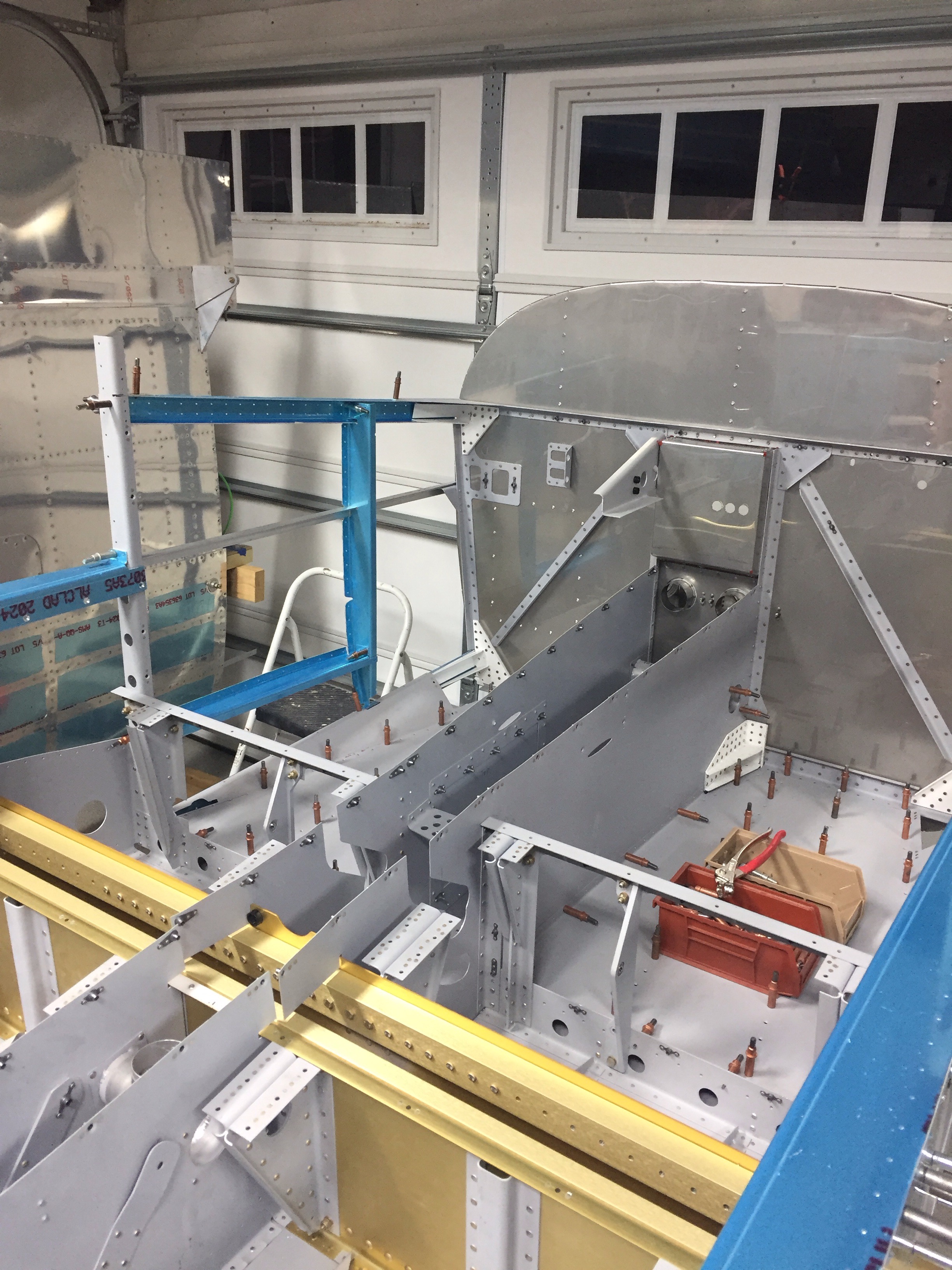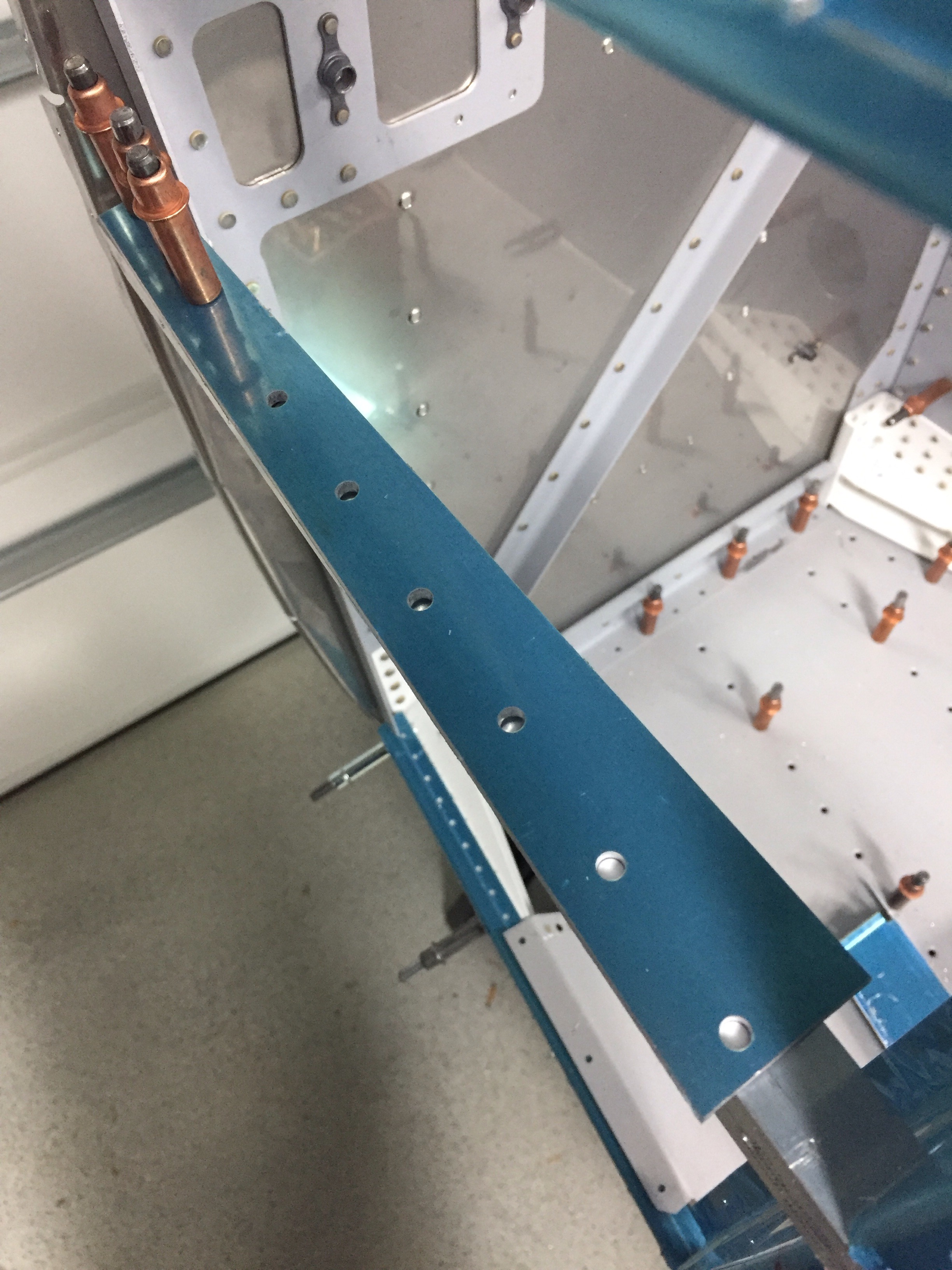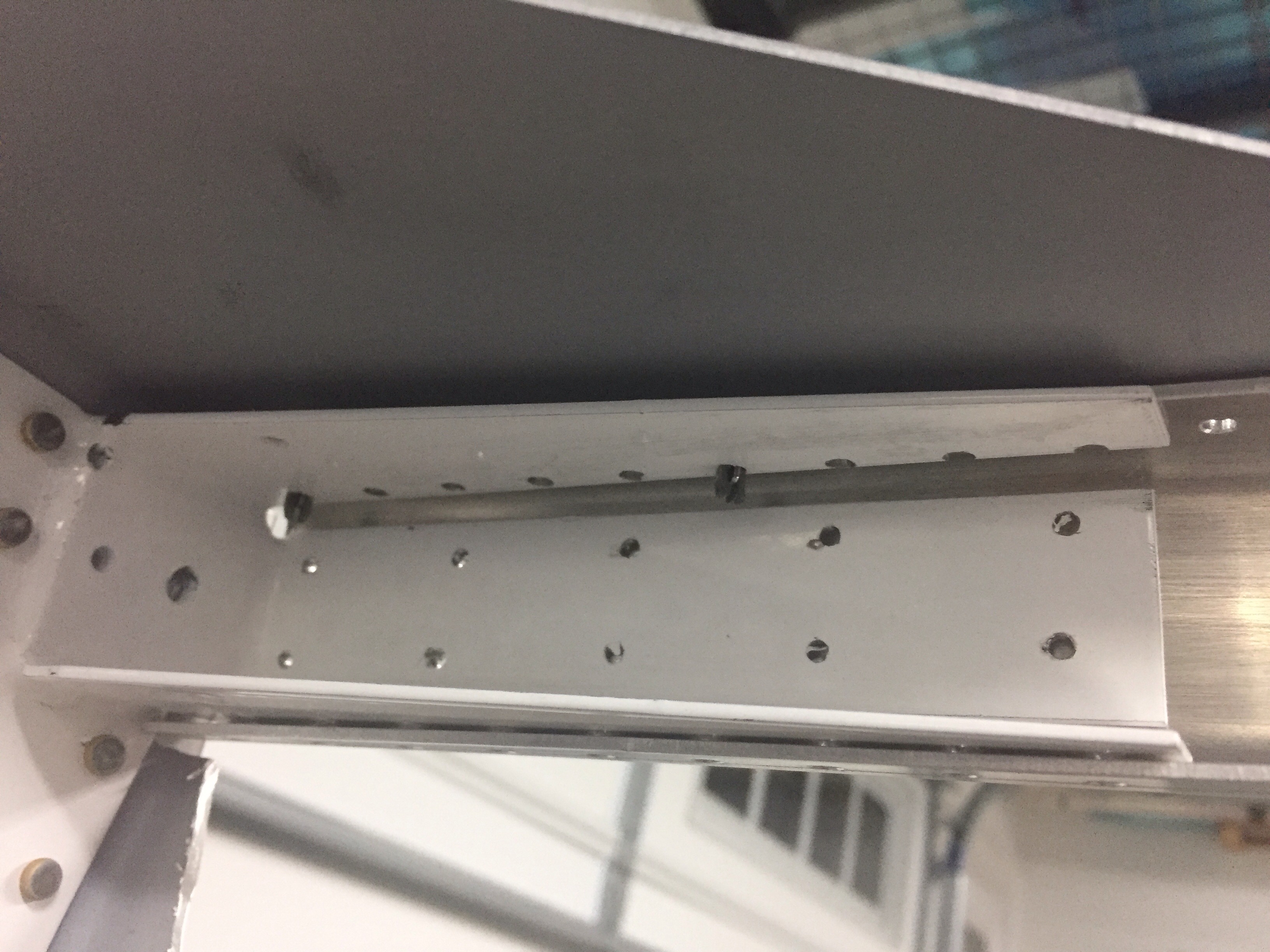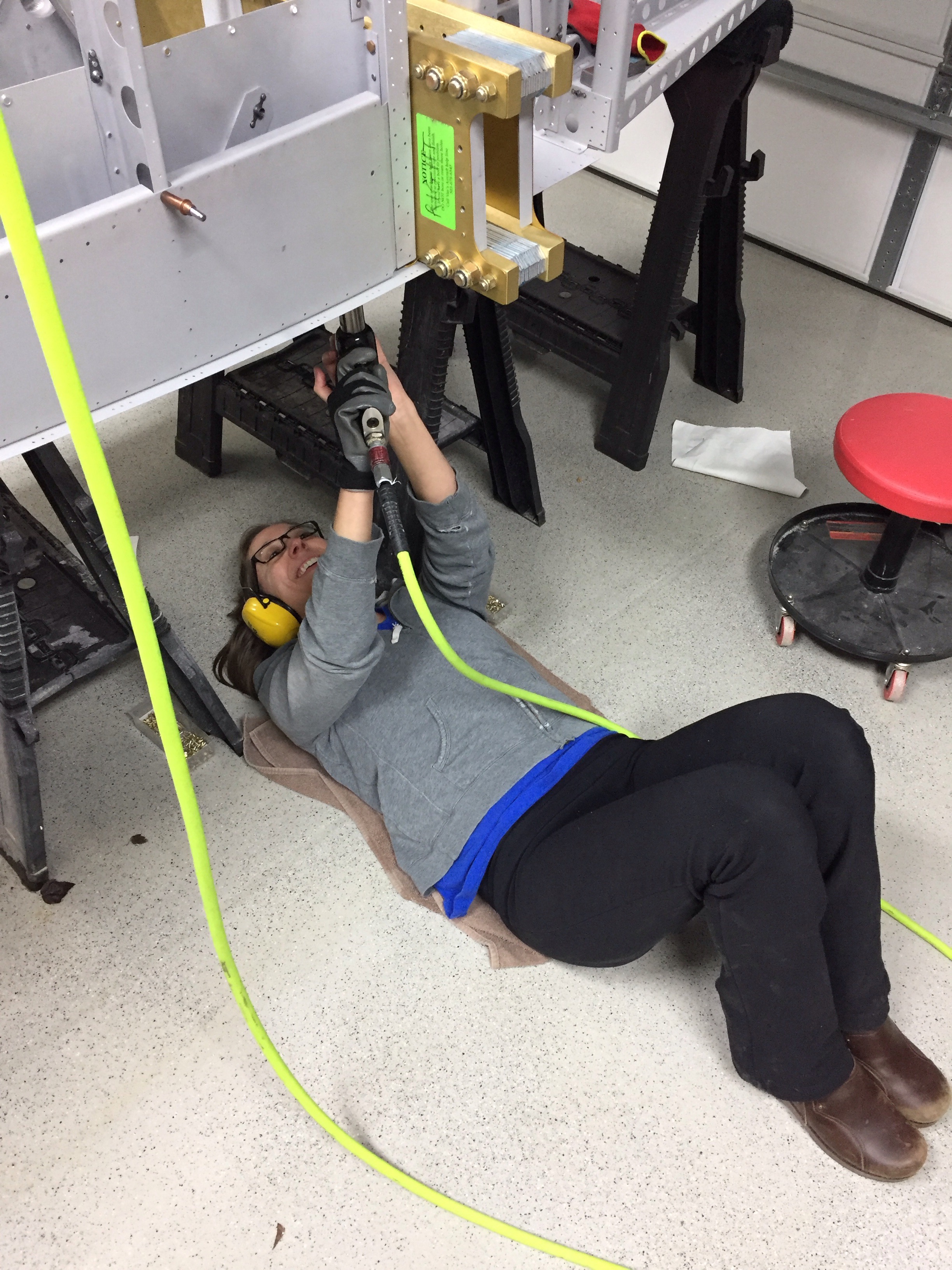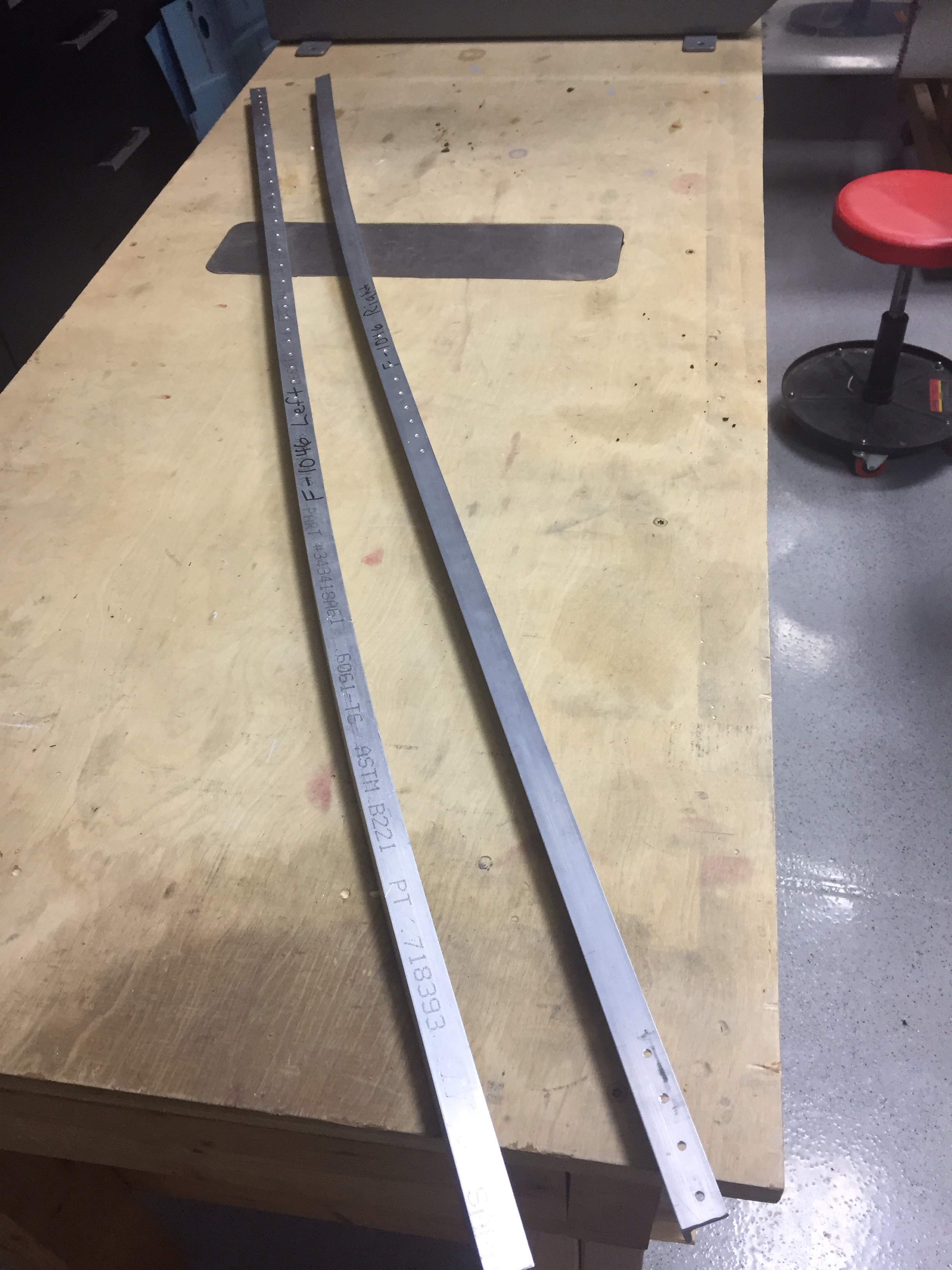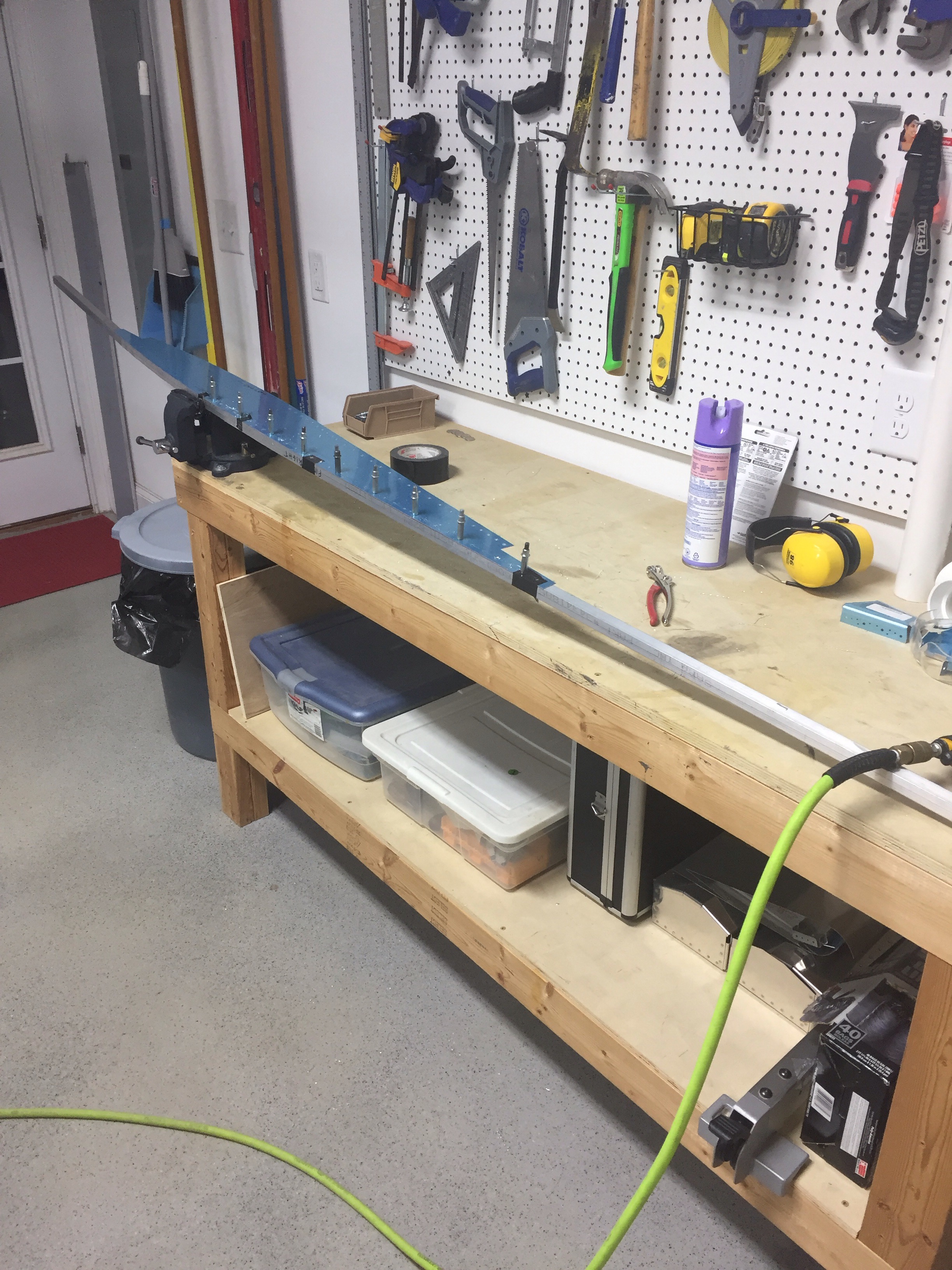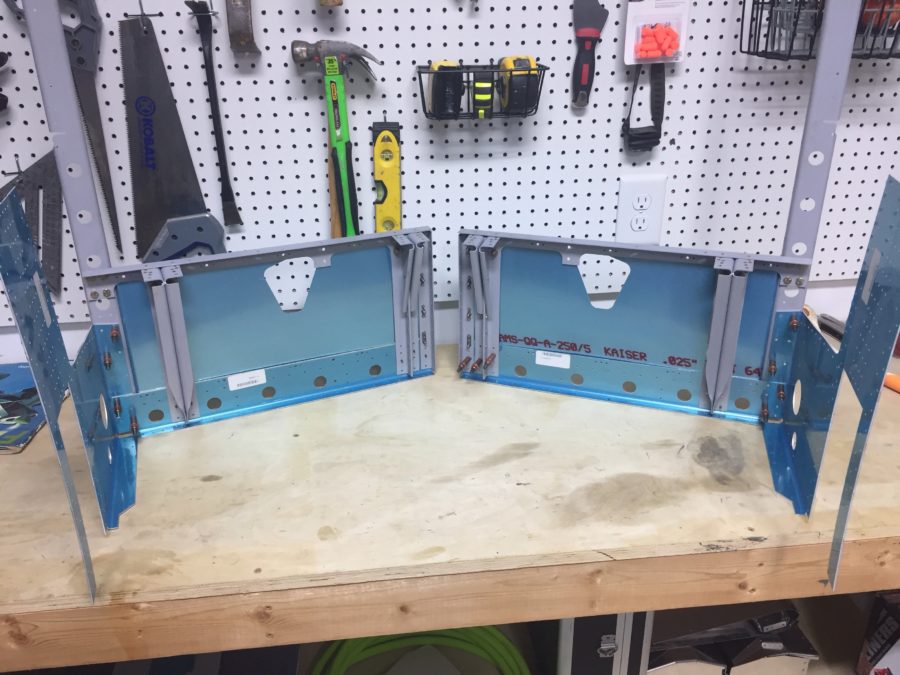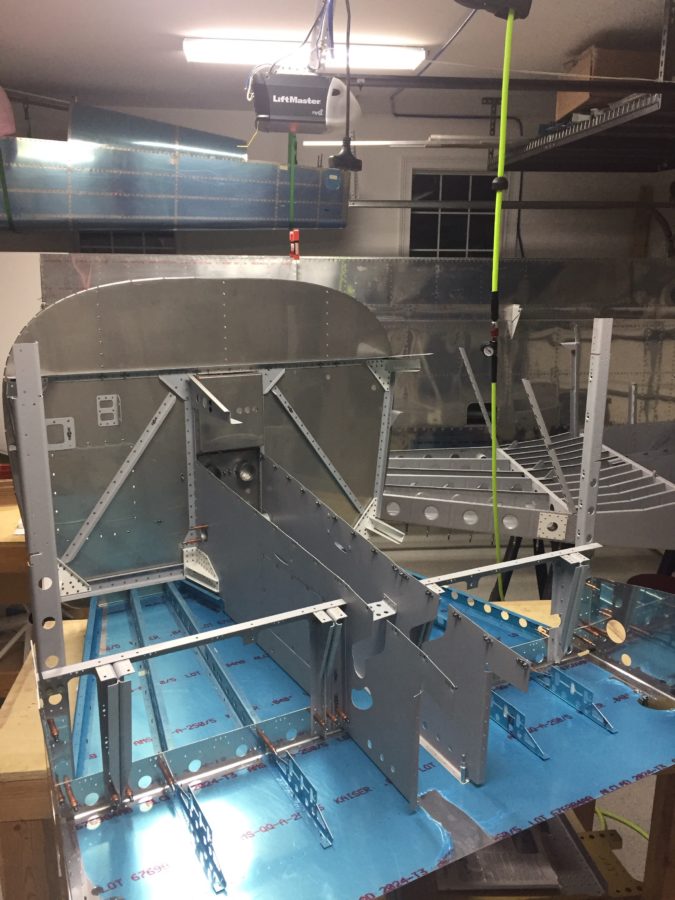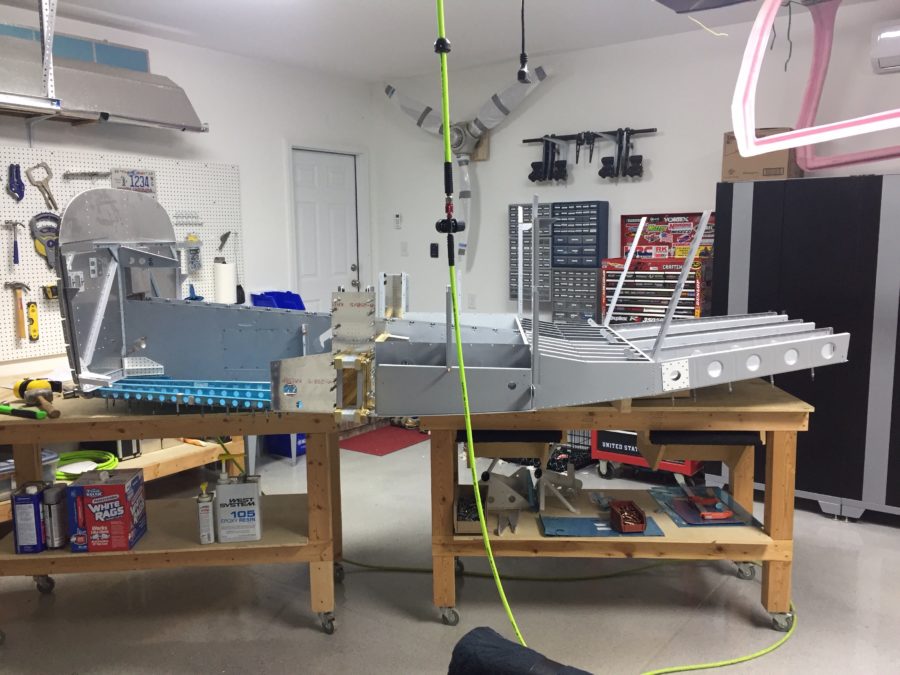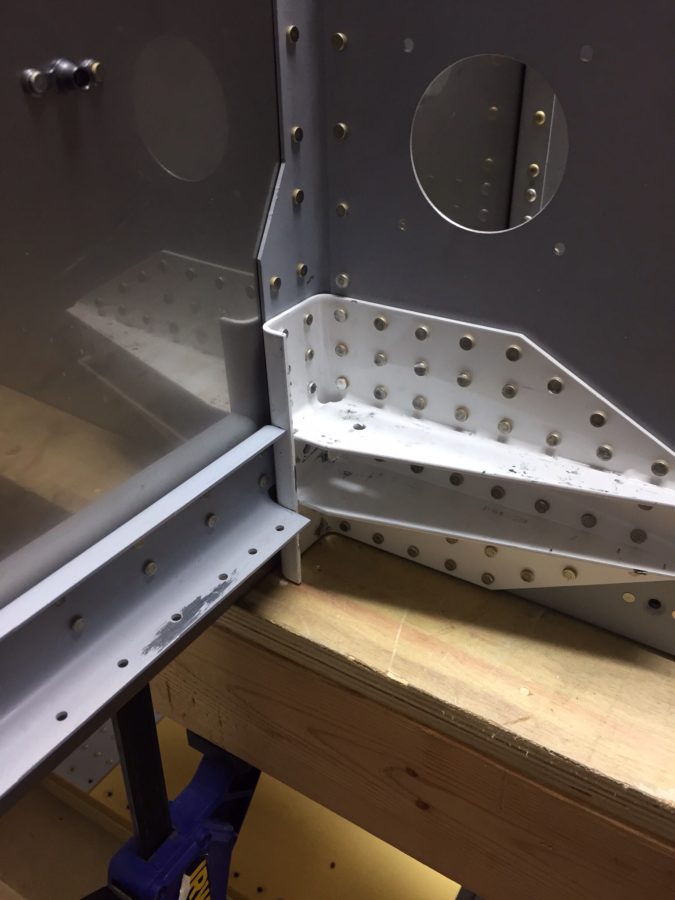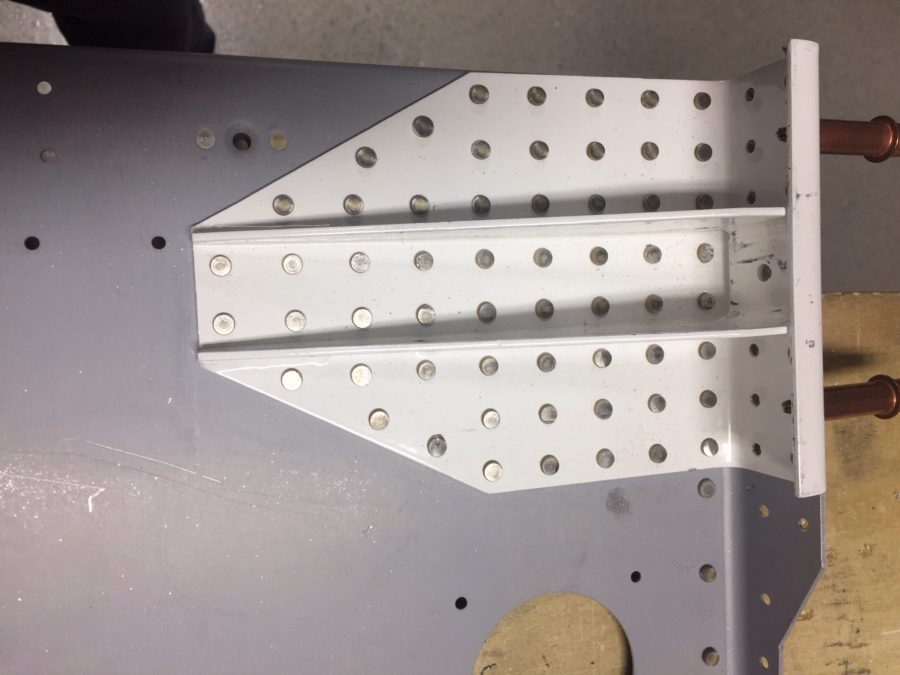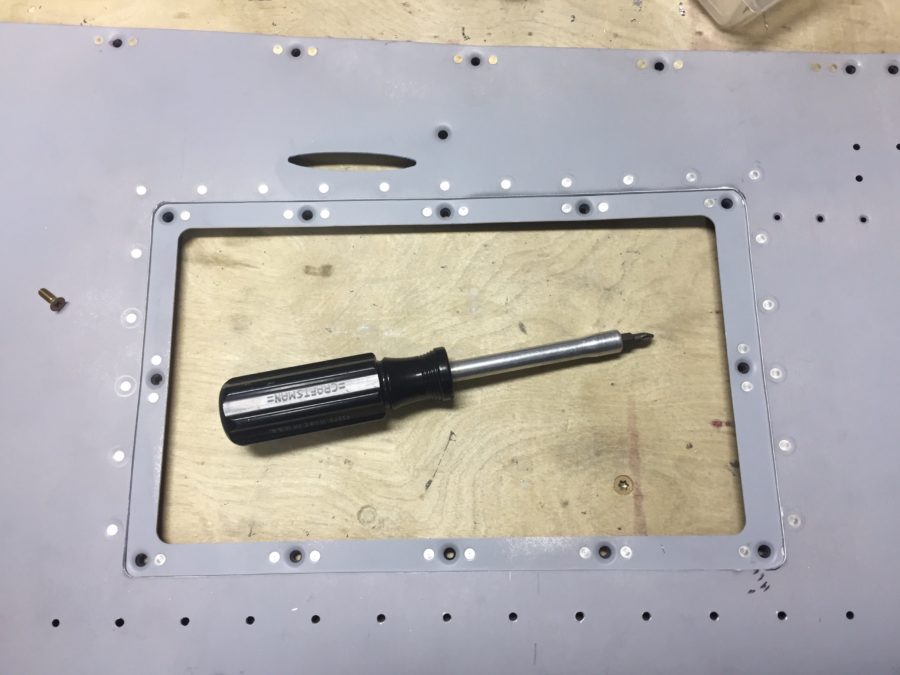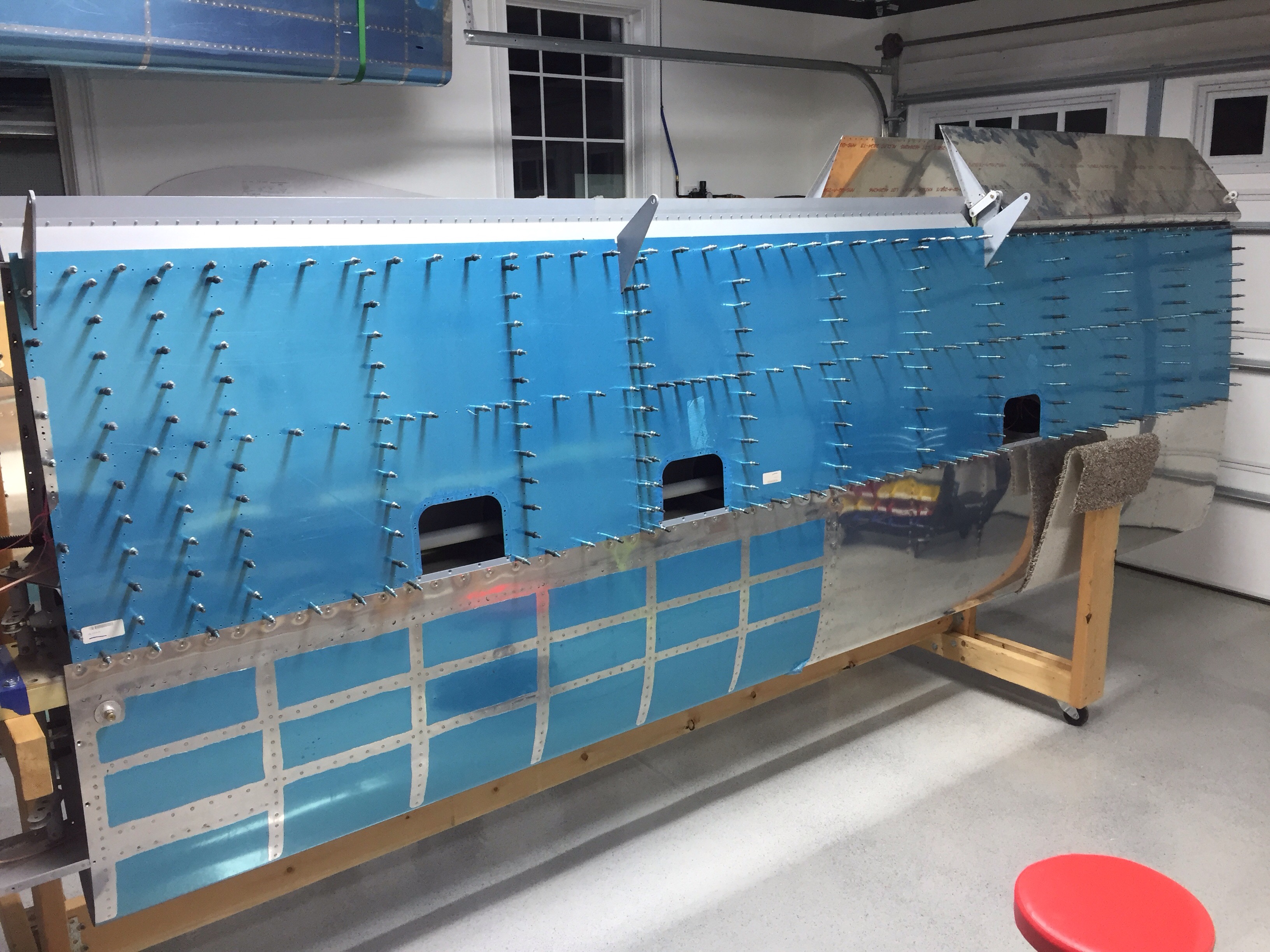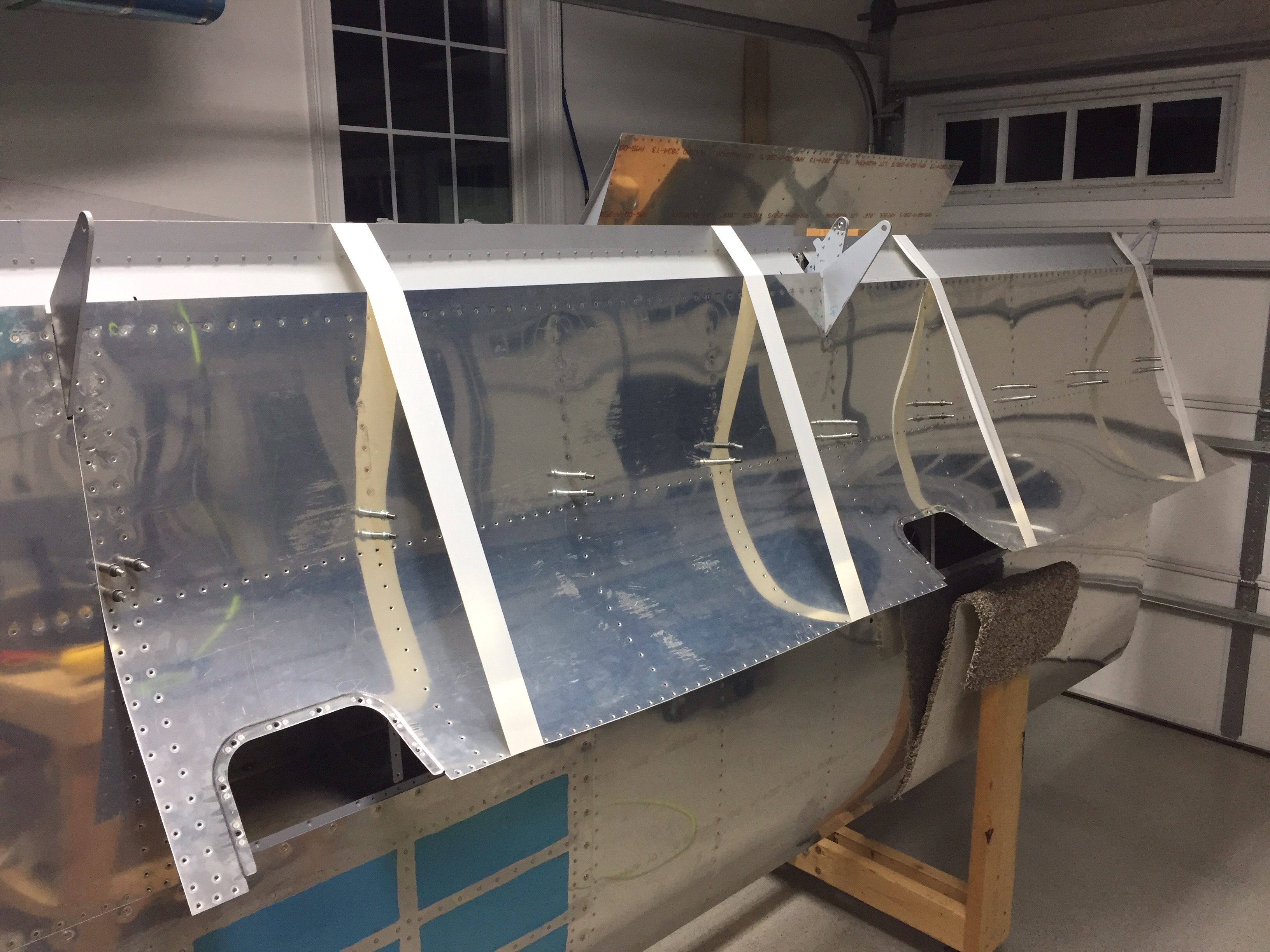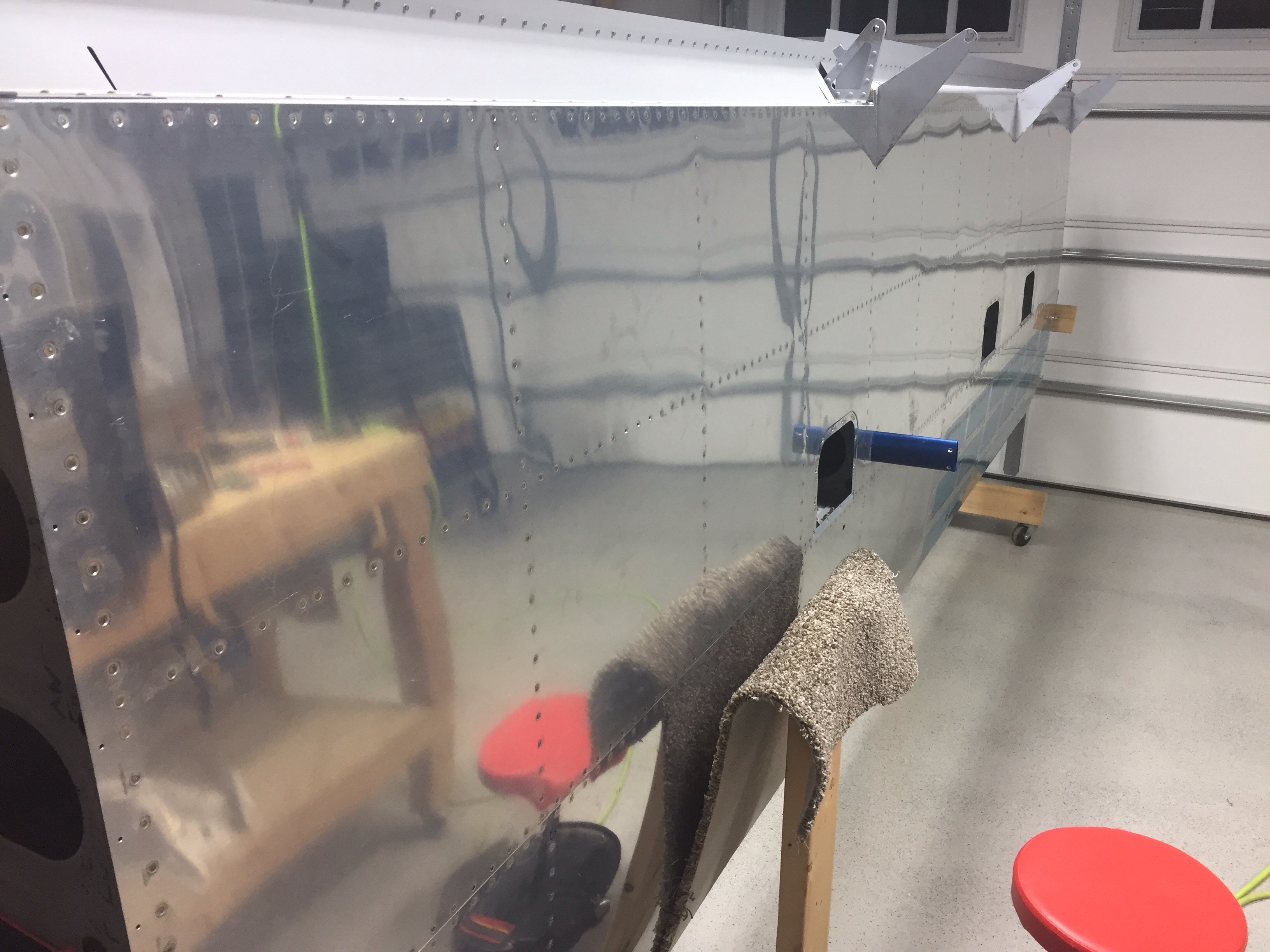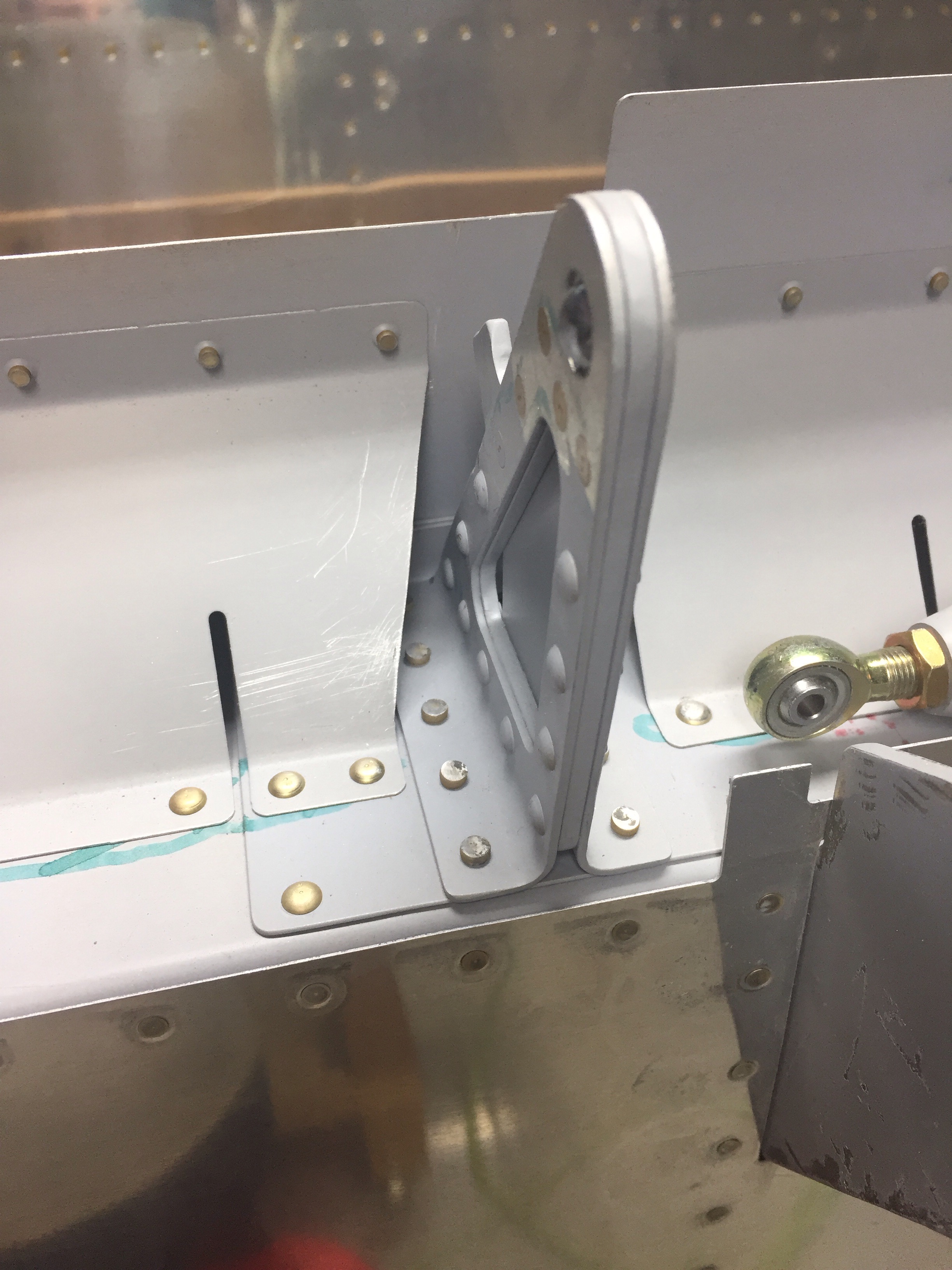Time has gotten away from this blog, so I have quite a bit of catching up to do. I also must admit that there were more than a few months that snuck by with no progress made on the project due to work, life, and other priorities. I’m happy to report that I’m back on the project nightly and am really making some exciting progress.
I left off with the tail cone repair and prepping to join the two sub structures. It was very anti-climactic to be honest! One rib worth of rivets required a bit of help from a friend to hit some rivets and boom, it was on for good. It really is starting to look like an airplane, or at least a canoe at this point. I’m very happy about the cradle on wheels, as the shop is getting a bit cramped on space, although I’m confident it will still be a nice workspace for the remainder of the project.
I pressed on with the steps, as you can see above and used the TCW step bushings to prevent the mounting bolts from crushing the tube and creating issues down the road. I attached the antenna doubters and am happy with the results. They are actually under the rear seat pans, not the baggage floor as previously mentioned.
Next up is the baggage floor, rear seat pans, and rear bulkhead. Lots of drilling, deburring, and priming but the work went fairly quickly. One thing that has always impressed me is the size of the cabin in the RV-10 and now that mine is coming together, I had to see how roomy it actually is. First time sitting in the plane! And no, I didn’t make any airplane noises quite yet since I was sitting in the back seat. Plenty of leg room.
Lot’s more to catch up on in the next post.

